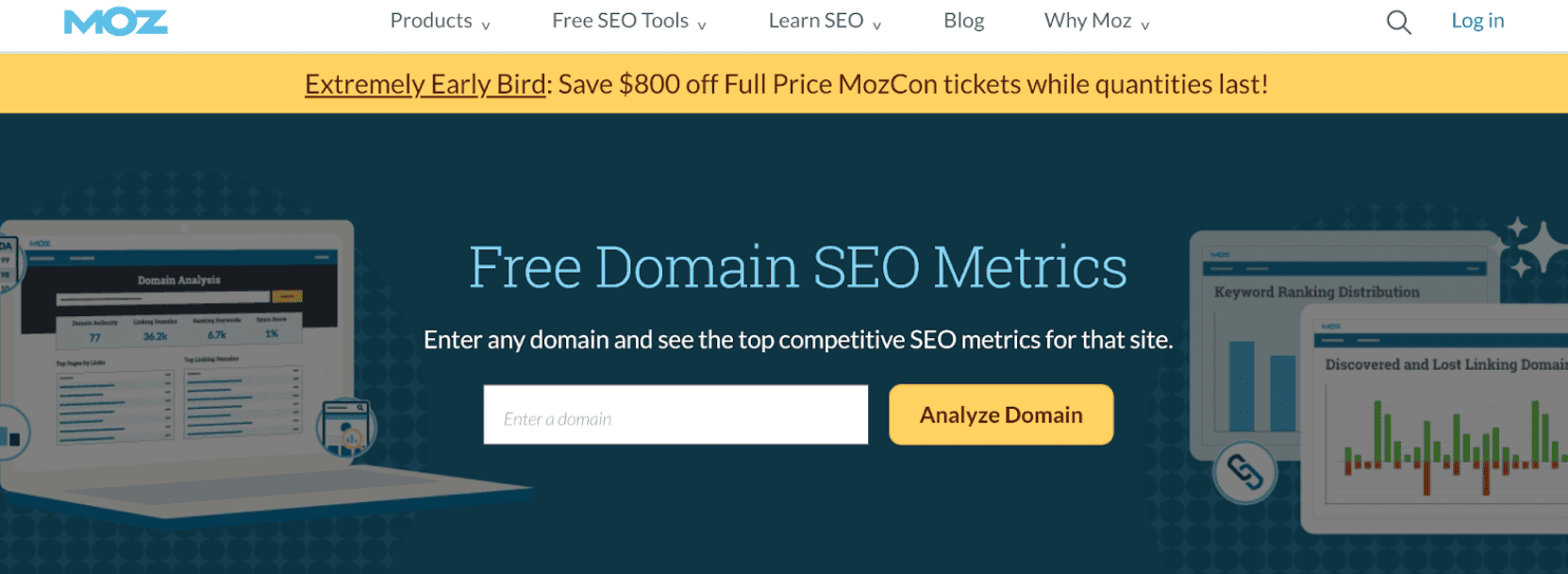The ultimate goal of every link builder is to build a strong backlink profile. This is where high-quality backlinks and referring domains come in. For example, a website that has 1000 links from 10 sources is not as strong as a website that has 1000 links from 1000 different websites. The latter website has more trust, more prominence, and more relevance in the eyes of Google.
That said, the current state of SEO (search engine optimization) is not only about link building but also about providing quality content that fulfills the user’s intent. So, while acquiring more quality backlinks and authoritative referring domains is key, SEO practitioners need to focus on creating amazing people-first content that answers the user’s questions, solves their problems, and satisfies their needs.
Evolution of SEO in 2024
As you attempt to increase the number of referring domains as part of your link building strategy, here are some major trends to keep in mind, and their potential future impact:
1) Algorithm updates: In 2024, there have been three major Google core updates so far: the March, August, and October core updates. Some key factors that Google now considers are Expertise, Experience, Authority, Trustworthiness (E-E-A-T), user experience, and helpful content.
2) AI in SEO: AI can help analyze large amounts of data, understand user intent, generate content, optimize keywords, and personalize user experience.
3) Organic and quality link-building: The quality and relevance of the links are increasingly becoming a key focus of Google as it steps up its efforts to penalize other sites that use spammy or unnatural links from a paid linking scheme.
4) User experience and Core Web Vitals: Google has introduced a set of metrics called Core Web Vitals that measure the UX of a website. Websites focusing on these metrics will improve their speed, responsiveness, and stability, giving them precedence over other sites with similar content but poor core metrics.
What is a Referring Domain and Is It Different from a Backlink?
A referring domain is where backlinks are coming from. Think of it as the source website. Each referring domain can provide multiple backlinks to your website, but it still counts as one referring domain regardless of the number of backlinks.
A backlink, on the other hand, is a direct link from another web page to your web page. Each link counts as a backlink, regardless of whether multiple backlinks come from the same domain.
The SEO Impact of Referring Domains vs Backlinks
Not all backlinks impact SEO. Google and other engines also look at other factors to determine how much link equity to pass. These factors include:
- Relevance: The link should come from a website that is relevant to the topic and niche of the destination blog post.
- Placement: It affects how likely the link is to be clicked by users, and search engines deem links placed higher up in the content as more critical.
- Link attributes: They tell Google and other engines how to evaluate links and pass authority. For example, the attribute rel=”nofollow” tells search engines not to follow or pass page rank, and rel=”sponsored” tells search engines that the link is paid for or not generated naturally.
- Anchor text: Google, Yahoo, and others look at the anchor text and surrounding context to understand what the destination page is about and how it relates to the source web page.
- Spammy or real: Google needs to establish if the link was generated naturally or artificially before passing page rank.
So, why are links from quality referring domains important? A natural, relevant, well-placed, and well-written link can boost the authority and visibility of the destination page. Conversely, an unnatural, irrelevant, poorly-placed, or poorly-optimized link can harm or fail to impact the SEO ranking.
*Note that internal links can help distribute link equity to other internal web pages that don’t have any high-quality linking sites.
Strategies for Acquiring Quality Backlinks and Referring Domains
Acquiring more inbound links from existing sources and getting more referring domains linking to you all contribute positively to your website’s authority and ranking. To achieve this, you need smart strategies to go about it:
1) Guest posting: It involves writing articles for other websites in your niche or industry and including a link back to your website in the author bio or within the guest posts.
2) Influencer outreach: You can generate backlinks by reaching out to influential people in your niche or industry and asking them to share or link to your high-quality content. You can do this by offering them something valuable in return, such as a free product, a testimonial, or a mention in your content.
3) Creating shareable content: It involves creating content that can naturally generate multiple backlinks and get a lot of shares. Some examples of shareable content are infographics, reports, studies, guides, etc.
4) Creating link magnets: If feasible, you can create something valuable that can attract links quickly, such as a free tool, a calculator, a quiz, etc. This is especially suitable for SaaS businesses that can offer useful solutions to their customers’ problems.
Acquiring more high-quality referring domains may be preferable, as it shows that your website is popular and relevant among a wider audience.
Link Quality Assesstment in Referring Pages
You can use a simple three-step process to gauge the link quality from a referring page. First, you need to know how trustworthy and influential the domain is. You can use indicators such as DA, which are available for free with tools like Ahrefs free backlink checker.

Check the website’s authority for free on Ahrefs
Second, you need to check if the domain is relevant to your niche as this can also boost your referral traffic. You can do this by looking at the topics and keywords that the domain covers and comparing them with your own.
Third, you need to verify that the domain is not spammy or manipulative. You can do this by analyzing the link profile of the domain, such as its link velocity, sources of links, anchor text distribution, site link growth, and content quality.
Factors Determining a Good Backlink
Some external links can boost your ranking, while spammy referring domains can harm it. How can you tell the difference?
- Linking domain’s authority: A higher authority means a higher quality link. You can use tools like Aherfs or Majestic to check the domain authority (DA) and trust flow (TF) scores of any website. A good rule of thumb is to look for websites with a DA of at least 20 and a TF of at least 20.
- Relevance of the linked content: The page that links to your website should provide value to the readers and enhance their user experience. This also applies to internal links.
- Context of the link: The best links are editorial links, meaning they are inserted naturally in the content by the author, not by you or a third party.
The Risks of Low-Quality or Spammy Links
Google is constantly refining its automated ranking algorithms to make them better at detecting and penalizing spam. The algorithms learn from the data and adapt to new patterns of spam. Therefore, it is not worth trying to trick Google with black-hat SEO tactics, which are unethical and risky ways, of trying to manipulate search engine rankings.
They include practices such as exchanging links with spammy websites, keyword stuffing, cloaking, and hidden text. When uncovered, they can lead to severe penalties from Google, such as de-indexing, lower rankings, or manual actions.
Instead, you should focus on building natural links from relevant and authoritative sources that provide value to your audience and enhance your credibility.
Tools and Techniques for Analyzing Referring Domains and Backlinks
Analyzing referring domains and backlinks is a crucial task for SEO, but it can also be time-consuming and tedious. That’s why you should consider using tools that can automate this process and help you handle a large volume of links.
1) Aherfs

Ahrefs is a comprehensive SEO tool that allows you to determine the quality of linking domains. It also provides comprehensive data about keywords and you can even track your competition’s link profile.
2) SEMrush

SEMrush is another SEO tool that offers similar features as Ahrefs but with a focus on competitor analysis. You can use it to spy on your competitors’ link strategies, keywords, ads, links report, and content.
3) Moz

Moz is a well-known SEO tool that provides a range of features for link building and analysis. You can use it to measure your domain authority, find and fix broken links, discover new link prospects, and monitor your link performance.
4) LinkChecker

LinkChecker provides you with the ability to get metrics for thousands of domains in one analysis (Ahrefs gives you only 200.) You just need to connect a regular Ahrefs account if you want to get info on referring domains and linked domains.
5) Google Search Console

Google Search Console is a handy tool provided by Google that allows you to keep track of your website search performance, identify indexing issues, and even check referring domains.

*Remember to check backlinks using Google Search Console and get more insights about user behavior from Google Analytics.
Frequently Asked Questions on Referring Domains
How many referring domains are enough?
Finding the right number of referring domains for your site is like strategizing in a competition. The best approach is to observe the top-ranking websites in your niche. See how many referring domains they have and aim for a similar count. The same goes for backlinks. Remember, it’s not just about quantity.
A website with fewer, high-quality backlinks can outperform one with more referring domains if its content is more relevant and engaging to users. Focus on both the quality of your backlinks and how well your content connects with your audience.
How do I know if a referring domain is good?
A good way to evaluate the quality of a referring domain is to check its site metrics. Focus on a few key factors: relevance to your niche, high domain authority, quality and informative content, and no search engine penalties.
How can I increase my website’s referring domains?
To increase your website’s referring domains, you need to implement an SEO strategy that involves creating valuable and relevant content, reaching out to other external websites in your niche, and offering them something in exchange for a link.
Conclusion: The Future of Referring Domains and Backlinks in SEO
To wrap it up, in the fast-changing world of SEO, link building still holds its ground. But here’s the twist – it’s all about getting smarter and more user-focused. The future is about smarter, more user-centered tactics. High-quality, engaging content is key to naturally attracting links.
Equally important is ensuring that these links are contextually relevant. Beyond your site’s content, aspects like site functionality, brand mentions, and social media presence are becoming integral to successful link building.
With the rise of voice search, paying attention to structured data is more important than ever. Staying attuned to these trends and adapting your strategies accordingly is essential for staying competitive in the dynamic landscape of digital marketing.






